Last week I wrote about one of the major reasons why so many startups fail: a lack of patience. Or a bit more precise: not understanding and respecting the timing and tempo of the market. In that, I shared one of my favorite and most useful mental models in strategic gameplay: Wardley Mapping.
Today I want to take you one step further; how do you know what the maturity of your market is and most importantly: where should we focus our energy on NOW and NEXT? Once you know those two things, you will be playing poker knowing what’s in the hands of your competitors.
So, a short recap from last week: everything that has ever been invented, built, and distributed, went through these evolutionary stages. But how do you know where you are now?
For that we can look at all the various climatic patterns of these stages. The best way to do this is by using the chart of characteristics below (click to expand).
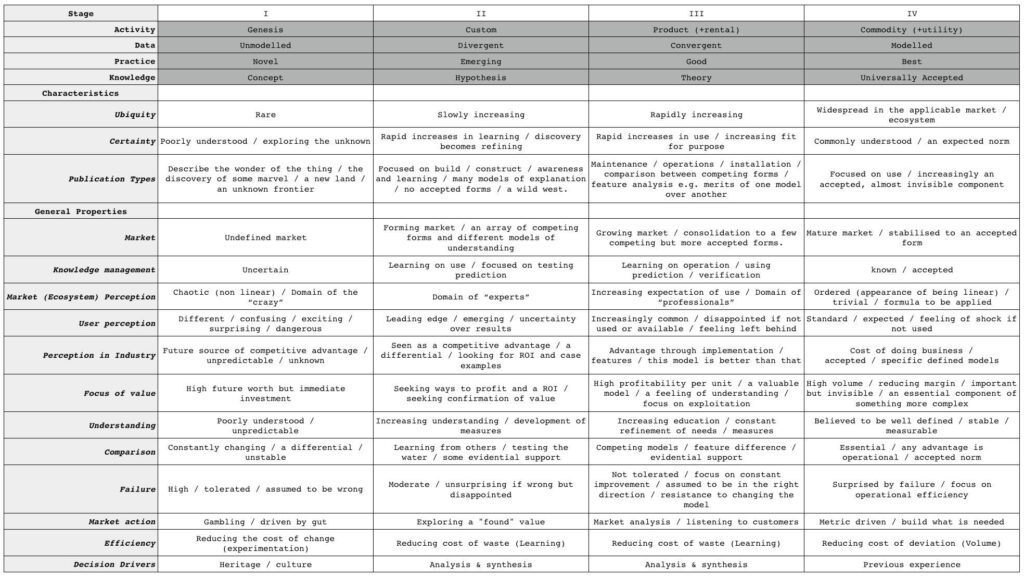
So every time we look at an entire product, or a segment of a product, and want to determine where it ‘objectively‘ fits on the maturity line, we go through each of these characteristics and choose in which column the current state fits best.
Examples:
- Publication types: if you read articles about this technology, is the tone mostly related towards “is this even possible?“, then you are still in the genesis phase. If on the other hand you start seeing publications where we start learning about some early adopter implementations and potential ROI cases, you know you’ve entered the custom build phase. It’s only when you start seeing 3rd party publications about consistent ROI, best practises, growing adoption, that you are entering in the productised phase.
- Focus on Value: what is the perception of the value generated to the customers? There is a clear distinction between the ROI needed to convince an early adopter versus an early majority or even late majority client. Early adopters will accept a custom build solution on the premise of getting let’s say a 3:1 ROI. Majority market clients will require at least a proven 5:1 return on a productized solution before they will take the risk.
- Failure Rate: what is the accepted failure rate? This is also a very clear distinction between the phases. Ranging from assumed to fail during research phases, over unsurprising, to continuous improvement, up to unacceptable for a true commodity.
So now what?
- Now you know what to focus your team’s energy on. Let’s take the first example of publications. As long as you are in the custom market, you focus mostly on awareness and demonstrating customer value cases. Don’t waste your time too much on fine-tuning best practises. It’s OK to make basic user guides, but don’t spend any marketing, let alone advertising energy and budget here. The same applies to the product strategy; focus on experimentation first, and hardening comes much later! Much … much .. later.
- Once you have decided to cut some activities down, you will be able to articulate this clearly towards your Board of Directors and shareholders, and your team will be able to execute at a much higher efficacy. If you do not make these decisions, YOU WILL WASTE EVERYONE’S TIME AND MONEY and that, my friends, is how you end up in the Startup Graveyard. Not by competition, not by having the wrong product, but by not knowing what to do when and losing everyone’s support.
- Months, quarters, and even years in advance, you will already know what will be the next focus point. This is how you build a corporate strategy in a highly competitive market. Losing track of this, is the second reason you will end up in the graveyard. While the leaders are moving forward, you’re still stuck and you are now in a chasing position, rather than leading. This is what Elon Musk does brilliantly by the way (I may need to dedicate a separate post on this).
Ultimately, when you do this long enough, you will be able to PREDICT the future and its timing pretty accurately. The biggest problem I have faced in my years as a strategy advisor, is founders and investors who think they can force this pace. They’ve called me unambitious when all I did was reading the signs.
Don’t believe me? Watch this chart by Simon Wardley with his predictions on the timelines of different fields. This chart is now 10 years old and is still BANG ON the money. Sidenote: “WAR” is not the productization phase, it’s the transition to industrialization/utility. This is where all remaining product players will be pushed out of the market (or bought) by the ultimate hoarding corporations that know how to sell and distribute commodities at minimal margins on extreme volumes.
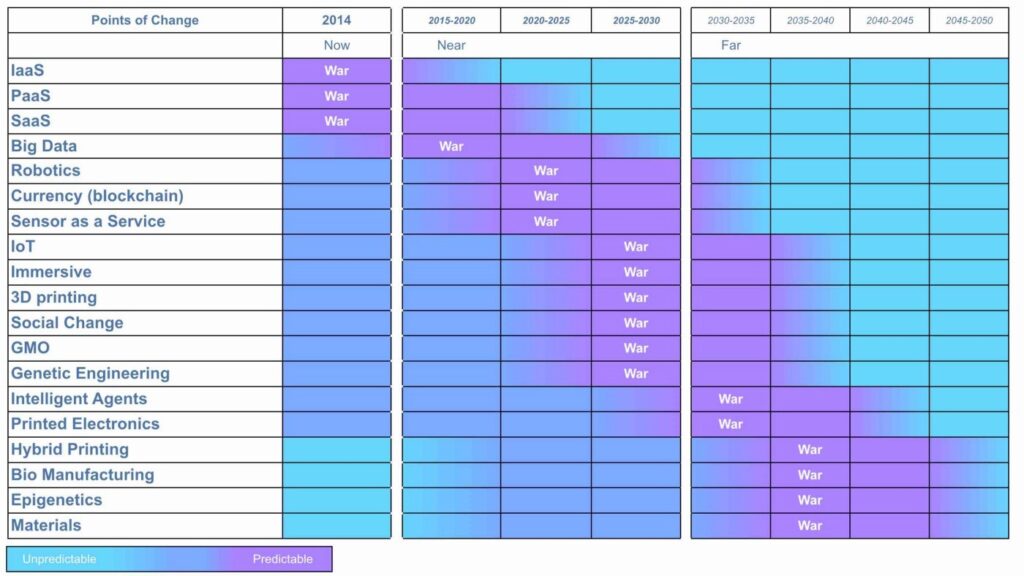
So far we have only used mapping to determine our own maturity level, its consequences, and how we can deal with that from a product/company perspective. In the next post I want to take you even one level deeper; by mapping our product/services into the user’s needs, we will be exposing our entire ecosystem and the powers that come from those insights. I’ll teach you how to leverage your whole ecosystem to fast-track your progress in a much leaner, more strategic fashion than today.
Practical Example
I cannot share the client’s name, but here’s an excerpt from one of my Product Market Fit analysis reports. You’ll notice I fact-checked some of the climatic pattern characteristics to demonstrate that this company’s technology was still in the Custom Built space, but beyond that, I could also show that the legacy vendors in the space were fighting a different battle. Do not forget to read the take-aways at the bottom as they truly are the insights that matter from this picture.
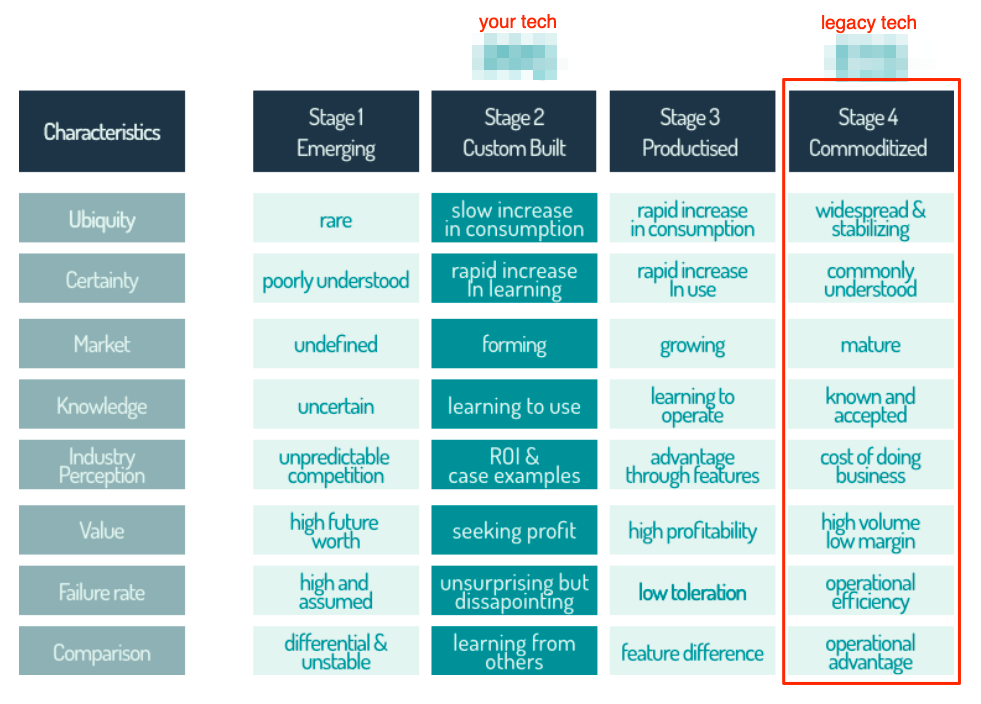
“Strategy Analysis
1) You cannot outcompete a utility business on its own turf. It’s an overall accepted situation with a well-balanced cost of operation. The only way to outcompete a utility market is in new capabilities. An example in your case is software vs hardware enables scalability instead of scarcity and new distribution models.
2) <your company> is not competing with <the utility market> for acceptance, <your technology> is competing with <the utility tech> for acceptance. <your company> is only truly competing with other <new tech> offerings. Getting <your tech> from Stage 2 to 3 or 4 is work the <new tech> market will have to do collectively [through competition].
3) This list of 8 characteristics is not complete as I just needed to get my point across. But what they do represent is a point of attack and a means of focus. Example: we are currently collectively working to prove ROI through Case Examples (Industry Perception), the next stage will be the fight for feature differentiation. By being first, we can differentiate and define the field.
4) The actual competitors currently in the landscape are less important than this collective search for the product definition! The ‘winners’ of the game are not being chosen just yet. Keep playing is more important than winning at this point.“
If you are interested in any of the insights I can bring to your company, I do recommend you have a look at my service page and schedule a meeting. https://hansdeleenheer.com/services/
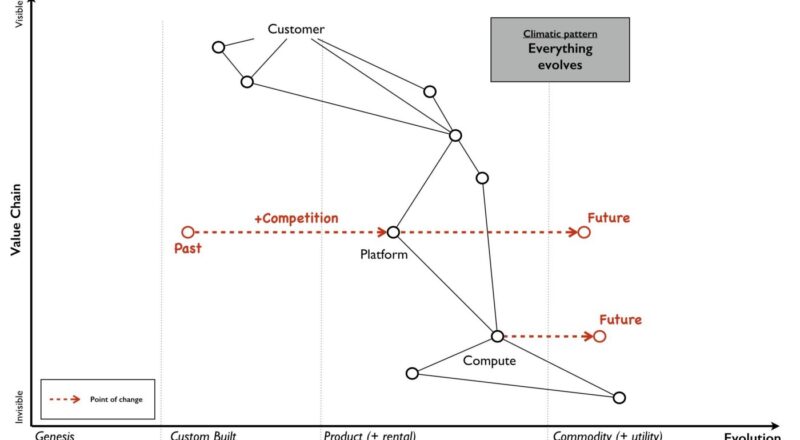
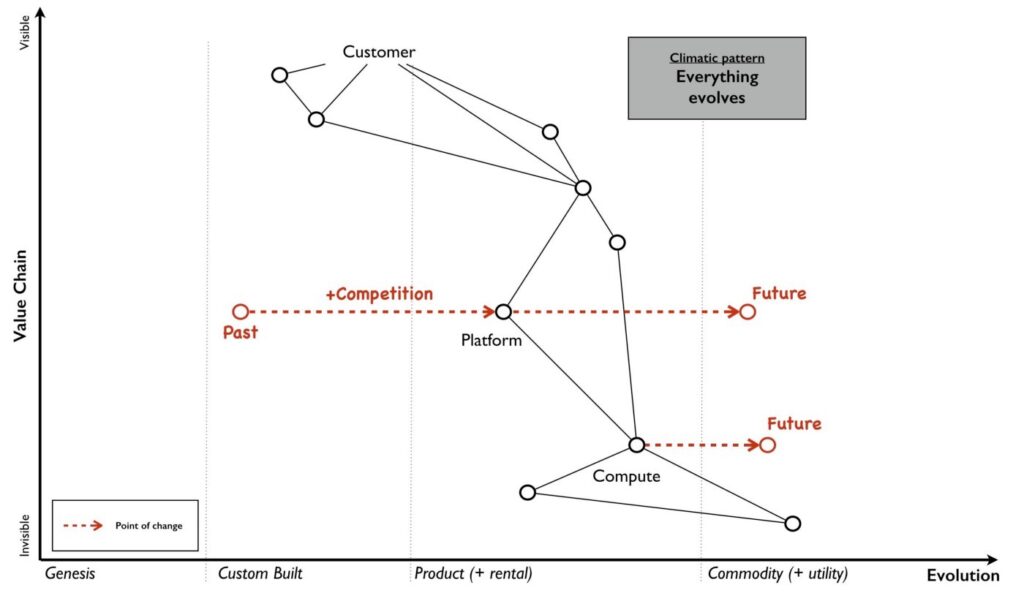
[…] In part two, I’ve demonstrated how you can practically find your current place in history and what the consequences are for your strategic gameplay if you decide to respect that timing. […]